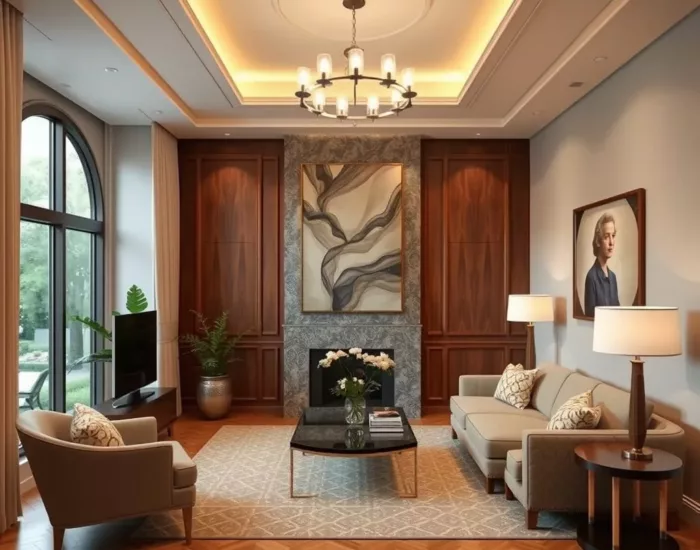Art Deco: An Overview of the Style of Elegance and Modernity
Definition and temporal classification
Art Deco is an influential art style that reached its peak in the 1920s and 1930s. The name comes from the Exposition Internationale des Arts Décoratifs et Industriels Modernes, an exhibition in Paris in 1925 that popularized this style. Art Deco was seen as a symbol of modernity, elegance and progress, reflecting the optimistic zeitgeist after the First World War.
Characteristics of Art Deco
Art Deco is characterized by its stylized, geometric, and often luxurious aesthetic. Characteristic features include:
Geometric shapes: Clean lines, symmetrical patterns, triangles, circles, and zigzag motifs.
Materials: Use of noble materials such as chrome, stainless steel, glass, ivory, lacquer and exotic wood.
Colors: Strong, contrasting colors, often combined with gold and silver accents.
Stylized representations: Human figures and animals were abstracted and elegantly depicted.
Technology and modernity: inspiration from industrialization, machines and futuristic shapes (e.g. cars, airplanes).
Representatives of Art Deco
Art Deco was not a uniform style, but influenced different fields and artists:
Visual Arts and Design:
Tamara de Lempicka: Known for her portraits with geometric shapes and cool elegance.
Émile-Jacques Ruhlmann: Designer of luxurious pieces of furniture.
Architecture:
William Van Alen: Architect of the Chrysler Building in New York, one of the most famous Art Deco buildings.
Auguste Perret: Designer of buildings with clean, modern lines.
Fashion:
Paul Poiret: One of the first fashion designers to integrate Art Deco elements into haute couture.
Jean Dunand: Known for his artistic lacquer work and jewellery.
Art Deco Highlights
Architecture:
Chrysler Building and Empire State Building (New York): These skyscrapers embody the technical progress and elegance of Art Deco.
Miami Beach Art Deco Historic District: Known for its pastel-colored facades and symmetrical shapes.
Design and interior design:
Furniture and home accessories with luxurious materials such as lacquer, glass and chrome.
Jewellery from Cartier and Van Cleef & Arpels, often inspired by Egyptian or Asian motifs.
Art and graphic design: Posters and illustrations depicting modern women, fast cars, and traveling to exotic locations.
Art Deco Areas
Art Deco influenced numerous areas of art and life:
Architecture: buildings, bridges, theatres and railway stations.
Industrial design: furniture, cars, trains, ships (e.g. the luxury liners of the 1930s).
Fashion and jewellery: Stylish clothing, accessories and filigree jewellery.
Graphic design and film: posters, film stages and props that emphasized the futuristic style.
Decline and revival
After the Second World War, Art Deco took a back seat as more functional styles such as International Style and Modernism were preferred. In the 1960s and 1980s, however, Art Deco experienced a revival, especially in pop culture and in the restoration of historic buildings.
Art Deco is one of the most influential styles of the 20th century. It combined luxury and functionality and still reflects the fascination for progress and aesthetics today. Whether in architecture, fashion or art, style has found its place in history as a symbol of the elegance and optimism of the interwar period.













